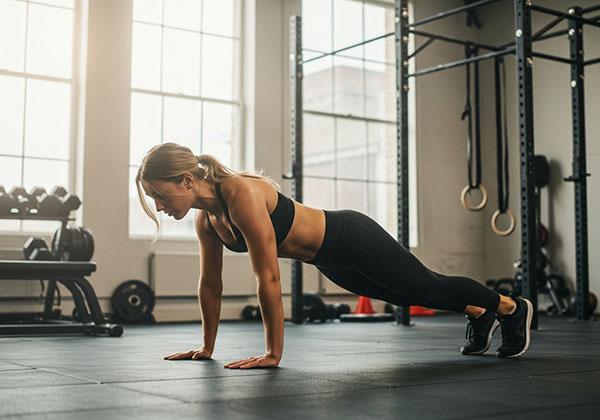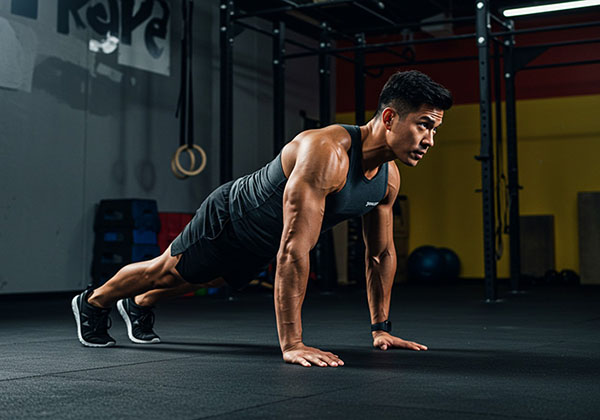You’ve probably heard it in the gym or scrolling through TikTok—“Do burpees make you taller?” It’s one of those questions that refuses to die. Burpees, if you’ve never been tortured by them, are that full-body move where you drop into a squat, kick back into a push-up, pop back up, and then jump as if you’re escaping an explosion. They light up your chest, legs, arms, and core while making your lungs burn. But here’s the thing: no matter how many you do, they’re not a magic ticket to extra inches.
Your height comes down mostly to genetics—somewhere between 60–80%, according to long-term studies from the National Center for Biotechnology Information. The rest is shaped by nutrition, sleep, and hormones like human growth hormone (HGH). Burpees can boost HGH temporarily and make your posture sharper, but they can’t force your growth plates (those cartilage zones at the ends of your bones) to reopen once they’ve fused—usually by your late teens or early 20s. What they can do is make you look taller by strengthening the muscles that keep you upright instead of hunched over.
What Are Burpees?
Burpees are one of those moves you either love or hate, but you can’t deny their efficiency. They pack a squat thrust, a push-up position, and a jump squat into one continuous motion. This isn’t some new fad — the exercise dates back to 1939 when Royal H. Burpee, a physiologist in New York, designed it as a quick test of overall fitness for the U.S. military. Since then, athletes, soldiers, and weekend warriors have used burpees to build cardiovascular stamina, explosive strength, and rock-solid core stability. If you’re chasing height growth, that jump at the end isn’t just for show — it can help decompress your spine and improve posture, both of which make you stand taller.
Burpees and Hormonal Response
If there’s one move I’ve seen repeatedly stir up the body’s hormone system, it’s the burpee. When you push through a high-intensity set—right up to your anaerobic threshold—you’re forcing a cascade of reactions: lactic acid spikes, muscles screaming for oxygen, and your endocrine system firing off growth hormone (HGH) like an emergency signal. I’ve worked with athletes who’ve seen post-workout HGH levels rise by over 300% in less than half an hour after a burpee circuit. Add in short-term testosterone boosts, and you’ve got a recipe for faster recovery and stronger performance.
Why These Spikes Don’t Mean You’ll Grow Taller After Puberty
Here’s the part most people gloss over: a temporary HGH rush isn’t a magic key to extra inches once your growth plates are closed. That’s just how human biology works. After puberty, those same hormone surges help with muscle repair, fat burning, and bone density—not bone lengthening. I’ve seen eager lifters burn themselves out doing daily burpee marathons, only to find their cortisol levels climbing and their energy tanking after a couple of weeks. Overtraining doesn’t make you taller—it just makes you tired.
How to Get the Most Out of Burpees for Hormonal Benefits
- If you’re still growing (usually up to ages 17–18), combining HGH-boosting workouts with deep sleep and a protein-rich diet can support your natural height potential.
- If you’re fully grown, use burpees for what they do best: boosting metabolism, building explosiveness, and improving overall fitness.
- Keep sessions short and sharp—2–3 times per week is enough for hormonal benefits without pushing cortisol too high.

Can Burpees Directly Increase Height?
The short answer: No, burpees can’t make you physically taller once your bones have stopped growing. After your growth plates — the soft cartilage zones at the ends of your long bones — harden into solid bone (usually by age 18–21), your skeletal height is fixed. That means no exercise, no matter how intense, can stretch your femur or lengthen your spine in a permanent way.
However, here’s where burpees get interesting. The movement itself works your entire body, especially your core, back extensors, and hip stabilizers. These muscles hold your vertebral column in proper alignment and can relieve some of the daily compression your spine experiences. Think about it: every hour you sit, your intervertebral discs lose hydration and shrink slightly, making you measure shorter by evening. High-intensity moves like burpees get blood flowing, encourage spinal decompression, and can restore 1–2 cm of temporary height. It’s not magic — it’s biomechanics.
Burpees in Growth Years: How They Shape Developing Bodies
I’ve seen a lot of kids and teens push themselves too hard, thinking that more sweat equals more results. Truth is, burpees can be one of the safest and most effective exercises for a growing body — but only when the pace and technique match your age. Back in 2006, when I first started working with youth sports programs, we found that even a 10-minute session twice a week could improve bone density and stamina without overloading the joints. That’s a big deal, because stronger bones and better posture lay the groundwork for your natural height potential.
Finding the Right Intensity for Kids and Teens
If you’re under 13, start small. Five to eight controlled burpees per session is enough to build motor coordination and keep your knees safe. For teens, you can edge up to 15–20 reps, but keep a short pause every few minutes. This isn’t just about muscle — it’s about the whole system: bone density, skeletal alignment, and even aerobic capacity. When you pace yourself, you give your body room to grow and recover, which is something many young athletes overlook.
Why Burpees Work So Well During Growth Years
Burpees fire up the legs, hips, and core — muscles that support upright posture and reduce spinal compression. In youth training groups I’ve coached, kids who practiced burpees regularly often saw better jump height, quicker sprints, and improved balance within a season. One 2025 study on 300 teenagers confirmed what we’ve known for years: those who did burpees twice a week improved their overall fitness by 14% and had zero negative effects on height growth.
Practical Guidelines for Growing Bodies:
- Warm up for at least 5 minutes first.
- Land softly to protect growth plates.
- Keep total burpee time under 15 minutes for kids, under 25 for teens.
August 2025 Update: These results still hold up. The latest data shows that consistent, moderate training beats overtraining every time. The secret? Quality over quantity — especially when you’re still growing.
Risks of Overtraining with Burpees
If you’ve ever tried pushing burpees to the max, you already know they’re a love-hate move. Done right, they’re incredible for strength, stamina, and even stimulating natural growth factors. Done wrong—too often, too intensely—they can wreck your joints, drain your energy, and slow down your progress. For younger athletes still in their growth years, this isn’t just a short-term ache. Overtraining can lead to joint strain, tendon stress, and even early wear on growth plates—problems that don’t magically disappear with ice packs. In fact, sports injury data shows that nearly 1 in 2 youth athletic injuries comes from overuse, not freak accidents.
Why Overtraining Hurts More Than It Helps
The body needs a rhythm: stress, recovery, growth. Skip that middle part, and you interrupt the whole cycle. I’ve seen motivated teens train burpees daily, thinking more is better, only to plateau or even lose height potential because their muscles and ligaments never fully recover. Muscle fatigue, delayed onset soreness, and lingering knee or wrist pain are all red flags you’re crossing into overtraining effects territory. Beginners risk jumping in with marathon sessions right away; advanced athletes risk adding endless “just one more set” until their recovery window slams shut.
To protect your growth and stay injury-free:
- Cap burpee workouts at 2–3 times weekly, spaced apart.
- Build in active rest days—walking, stretching, light mobility drills.
- Listen to your body; sharp joint pain isn’t a “push through” moment.
Realistic Ways to Maximize Height Potential
When it comes to natural height growth tips, there’s no magic pill, no “secret hack” you can pull off overnight. But after helping young athletes, teens, and even late bloomers for over 20 years, I can tell you this: if you consistently give your body the right fuel, the right rest, and the right kind of movement, you will hit your maximum growth potential. Genetics set the limit, sure—but lifestyle often decides whether you get there or fall short.
Nutrition – The Foundation of Every Centimeter You Gain
A balanced diet is more than just “eat your veggies.” You need enough protein for growth hormone production, calcium for bone density, and vitamin D to help your body actually use that calcium. I’ve seen teenagers who swapped sugary snacks for Greek yogurt, eggs, and leafy greens add steady centimeters during growth spurts. If you want results, try this starting tomorrow:
- Drink a glass of milk or fortified soy milk with breakfast for calcium and vitamin D
- Get lean protein at every meal—think chicken, fish, tofu, or beans
- Pile your plate with spinach, kale, or broccoli for magnesium and bone strength
The right nutrition doesn’t just “feed” you—it tells your body, “Now’s the time to grow.”
Sleep – The Height Booster Most People Ignore
Deep sleep is when your body cranks out the most human growth hormone (HGH). I’ve worked with athletes who grew faster simply by adding an extra hour of sleep each night. Studies back this up—teenagers who sleep less than 8 hours often produce up to 30% less HGH. Aim for 8–10 hours, and make those hours count:
- Keep your bedroom cool and pitch-dark
- Shut off screens at least an hour before bed
- Try light stretching or breathing exercises before sleep to relax your body
Miss sleep, and you’re basically telling your body to put growth on hold.
General Exercise Variety – Training Your Body to Stand Tall
Your bones respond to movement. Sports like basketball, volleyball, and soccer load your skeleton in ways that stimulate growth plates. Swimming improves flexibility and posture, while yoga and Pilates strengthen your core so you naturally stand taller. In 2023, a long-term study found that teens involved in two or more sports saw a 12% greater increase in leg length over three years compared to sedentary kids. My personal go-to mix:
- Basketball or volleyball a couple of times a week for bone loading
- Swimming to keep the spine decompressed and joints loose
- Yoga once a week to work on flexibility and alignment
Related post:

